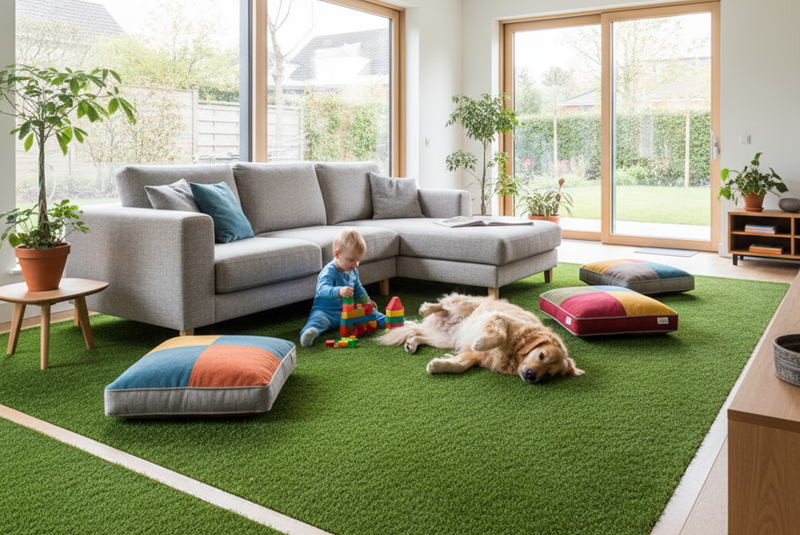Have you ever walked across your floor only to feel a hint of a wobble, or perhaps a dip? Noticed an uneven surface that makes your beautiful furniture look a bit wonky? Uneven floors are more than just an aesthetic problem – they can lead to structural instability and pose a safety hazard as well. But fret not! Whether you’re renovating an old beauty or preparing the groundwork for your dream house, floor levelling is your ticket to a solid, smooth and safe base. Is it possible to carry out a DIY floor levelling project? Absolutely! Read on for a comprehensive guide filled with tips, tricks and techniques to get your floors perfectly flat and fabulously finished.
Figuring out how to make an uneven surface smooth and level isn’t as perplexing as it might seem at first. With the right tools, some patience and quite a bit of elbow grease, this daunting task becomes an achievable DIY project that can save you both time and money. However, let’s be clear that it’s not all sunshine and daisies; there’s plenty to learn and work around. But hey, isn’t that what makes DIYing so incredibly satisfying?
In this blog, we’ll delve into what floor levelling involves, when you should consider it, and how best to go about it. We’ll also weigh the pros and cons of taking the DIY route while offering practical advice gleaned from professionals in the field. So let’s kick start your DIY floor levelling journey, shall we?
What Exactly is Floor Levelling?
Floor levelling is a preparatory process aimed at ensuring your floor is completely flat and free of irregularities. The key to conquering this task lies in understanding its nuances, to begin with – the materials, tools, and techniques at your disposal, and most importantly, the step-by-step process that guides the whole operation.
While learning to level your floor might seem a bit daunting initially, it’s certainly not impossible. The crucial part is ensuring you have ample time, a reliable guide (ahem!), and buckets full of perseverance. Remember, Rome wasn’t built in a day, and neither will your perfectly levelled floor!
Why is Floor Levelling Essential?
Floor levelling guarantees a steadfast, stable foundation for any further work you wish to undertake on your floors. Whether you’re installing tiles, laying carpets, or applying new floor coverings, a level base ensures better longevity, improved aesthetics, and less risk of damage.
From an interior design perspective, a level floor is crucial to showcase your furniture pieces in the best light, avoiding any unwanted tilts or awkward viewing angles. Functionally, it mitigates risks related to stumbling, wobbling furniture or doorframes, and possible water accumulation, especially in areas susceptible to flooding.
When to Consider Floor Levelling?
The perfect time for floor levelling depends on your home improvement plans. If you’re planning a major renovation, including new flooring installations or extensive refurbishments, that’s a great time to consider floor levelling.
A surface with visible dips, rises, cracks or structurally suspect areas also calls for immediate attention. However, remember DIY floor levelling is best suited for minor to moderate unevenness. For severe issues, hiring a professional might be the safest bet.
Materials Needed for DIY Floor Levelling
Equip yourself with the right tools before embarking on this DIY adventure. Key items on your list should include some floor levelling compound, a sturdy trowel, a long level, buckets, and adequate protective gear. It’s better to gather everything beforehand instead of fumbling midway through the project.
Pros and Cons of DIY Floor Levelling
In the spirit of transparency, it’s only fair to assess the potential benefits and drawbacks of DIY floor levelling. Besides being a money-saver, the process contributes to skill-building and promotes a sense of accomplishment once completed. However, a DIY attempt requires investing significant time, patience and involves some physical labour.
A Step-by-Step Guide to Floor Levelling
Roll up those sleeves and brace yourself for an experience that will test as well as teach you! We’ve broken down the process into eight detailed steps, starting from prepping the area to applying the finishing touches.
Conclusion: Taking the Floors Level High!
Embracing DIY floor levelling can be an empowering decision. It presents an opportunity to actively participate in the transformation of your space, walk the fine line between challenge and achievement, and save some hard-earned money in the process.
However, it’s essential to determine whether the condition of your floor makes it a viable DIY task or calls for professional help. An honest assessment, partnered with careful planning and preparation, can help you make the right call.
Love where you live, treat it like it deserves, and never shy away from making improvements when necessary. Remember, every step you take to make your home better is a step towards building your dream dwelling. So, whether you’re a seasoned DIYer or a rookie taking on an exciting project, don’t let uneven floors hold you back! Learn the secrets to perfect floor levelling and transform your space with ease.











